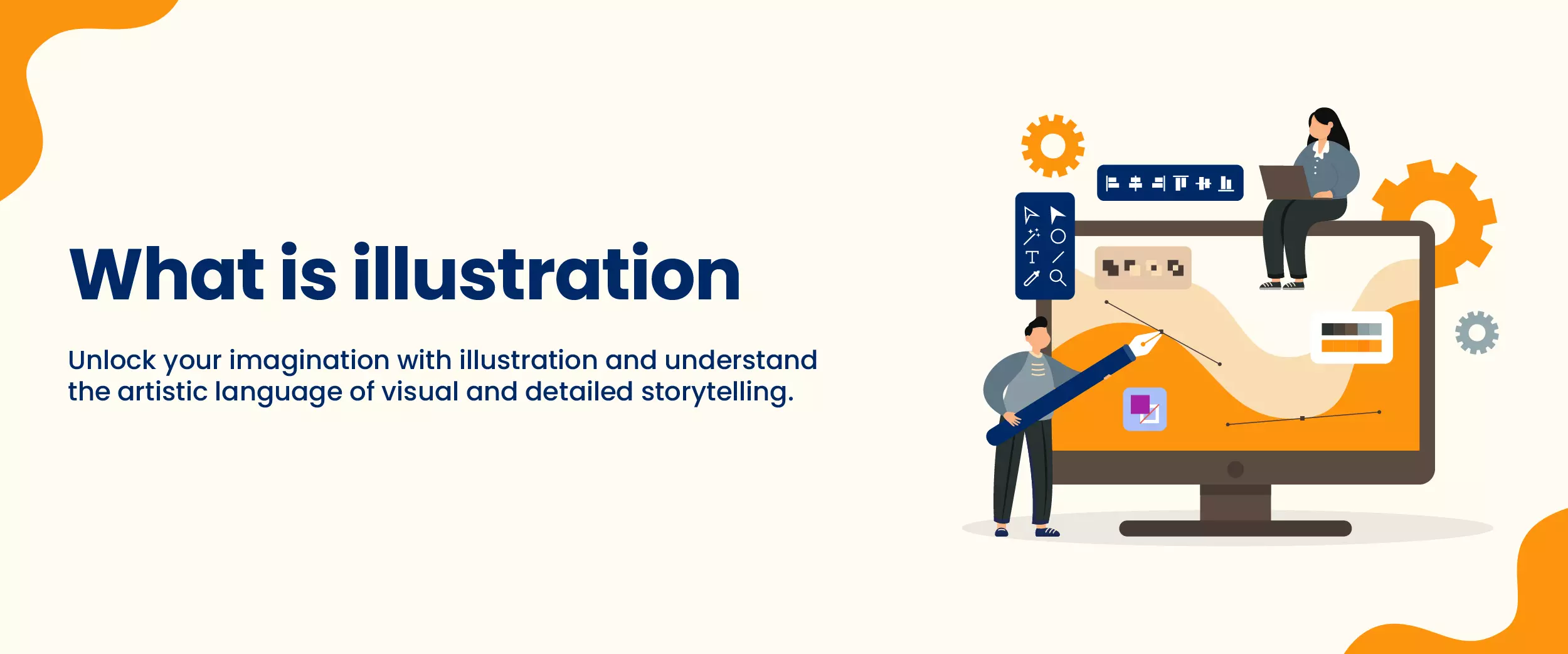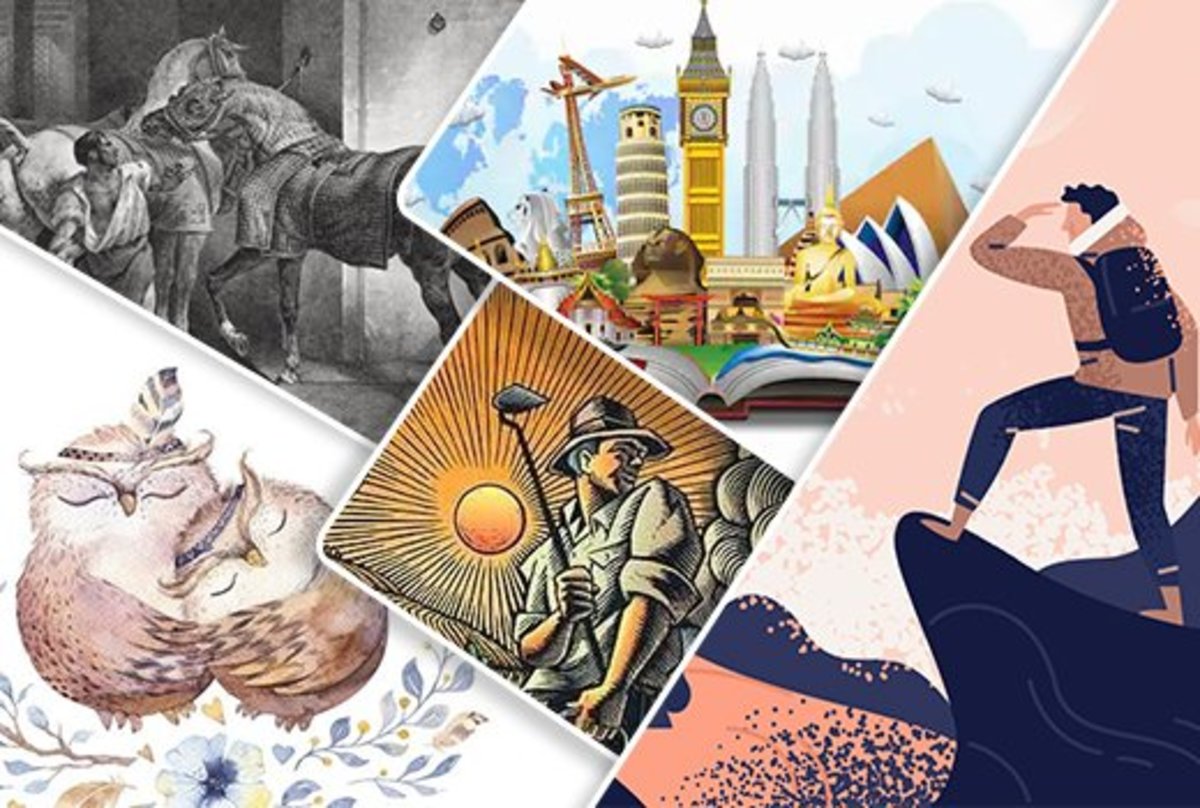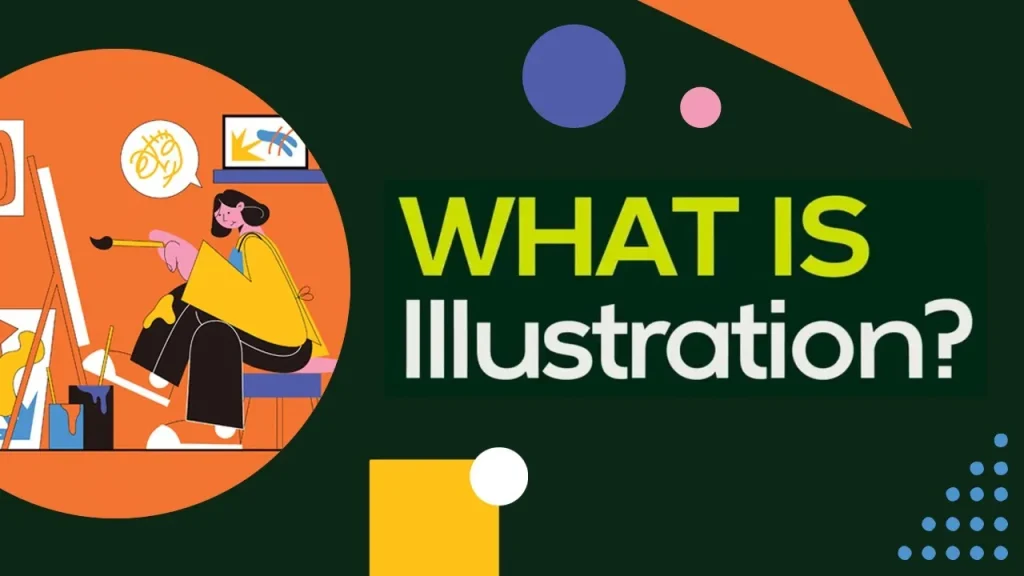Table of Contents
Unleash your creativity and discover a world of artistic expression with 15 diverse illustration styles. Learn about each style’s unique characteristics and how they can add power and personality to your visual communication.
What is Illustration?

Illustrations are like visual explanations that use images to tell stories, share ideas, or make information clearer. They can be found in many places, like books, magazines, and online. Illustrations come in all sorts of styles, and artists use their creativity to make them effective.
What is Illustration Style?

An illustration style is like an artist’s visual voice. It’s the way they use different elements, like colours, lines, and details, to create their unique artwork. Styles can be realistic or abstract, detailed or minimalist, and everything in between. They can be influenced by the artist’s preferences, the subject matter, and the intended audience. Just like you can recognize a friend’s writing style, you can learn to recognize the unique styles of different illustrators!
15 Illustration Styles To Analyze

Here are 15 illustration styles you can explore to help you create amazing illustrations for your next project:
1. Realistic Illustration
Realistic illustration is a style of art that aims to depict subjects with a high level of detail and accuracy, often resembling photographs. Artists who specialize in this style pay close attention to capturing the realistic attributes of their subjects, such as proportions, textures, lighting, and shading. They utilize various techniques, such as fine brushwork, meticulous pencil rendering, or digital painting, to create images that closely resemble the appearance of the real world.
2. Cartoon Illustration

Cartoon illustration is a distinctive art style characterized by its playful and exaggerated portrayal of subjects. It often features bold outlines, vibrant colors, and simplified forms to create whimsical and humorous visuals. Cartoon illustrations can also generate pencil illustrations, mainly used across various media, including comics, children’s books, graphic novels, advertising, and animations.
3. Watercolor Illustration
Watercolor illustration is a versatile and expressive art style that utilizes water-based paints to create vibrant and translucent images. This traditional medium involves applying pigments mixed with water onto paper or other absorbent surfaces. Watercolor illustrations are known for their softness, fluidity, and delicate washes of color.
4. Digital Illustration
Digital illustration is an art form that involves creating visual works using digital tools and software. It has gained immense popularity due to its versatility, ease of editing, and limitless creative possibilities. Digital illustrators use a variety of digital drawing tablets, stylus pens, and software programs to create different artworks.
5. Retro Illustration
Retro illustration is an art style that draws inspiration from the aesthetics of past eras, particularly the 1950s to the 1980s. It captures the nostalgia and charm of vintage designs, often characterized by bold colors, geometric shapes, typography, and motifs associated with specific periods.
6. Vector Illustration
Vector illustration is a digital art style that uses mathematical equations and geometric shapes to create images. Unlike raster-based images, which are composed of pixels and can lose quality when resized, vector illustrations are resolution-independent. They can be scaled up or down without any loss in quality.
7. Abstract Illustration
Abstract illustration is a style of visual art that emphasizes the use of shapes, colors, lines, and forms to create non-representational and non-literal imagery. Its departure from realistic depictions characterizes it and focuses on conveying emotions, concepts, or ideas through abstract visual elements.
8. Cutout Illustration
Cutout illustration, or collage illustration, is a distinctive art style that involves creating images by assembling various shapes, patterns, textures, and objects cut out from different materials or images. It involves layering and arranging these cutout elements to form a cohesive composition.
9. Vintage Illustration
Vintage illustration refers to a style of art reminiscent of earlier periods, typically from the late 19th century to the mid-20th century. It captures the visual aesthetics and design elements associated with specific eras, such as art nouveau, art deco, retro, or mid-century modern.
10. Minimalist Illustration
Minimalist illustration is a style of art that focuses on simplicity, reduction, and minimal elements to convey a message or depict a subject. It embraces the “less is more” philosophy, stripping away unnecessary details and complexities to create a clean, uncluttered visual composition.
11. Fashion Illustration
Fashion illustration is a unique art style depicting clothing, accessories, and fashion-related themes. Fashion designers or other professionals often use it in the fashion industry to showcase designs, communicate ideas, and capture the essence of fashion trends.
12. Line Art Illustration
Line art illustration is a drawing style that uses clean, crisp lines to represent a subject or concept visually. It primarily uses outlines, hatching, and cross-hatching techniques to define shapes, forms, and details.
13. Sci-Fi and Fantasy Illustration
This style allows artists to push the boundaries of what’s possible, creating visually stunning worlds and characters that inspire awe and wonder.
Beyond the fantastical elements, these illustrations can convey powerful messages about humanity, the environment, and the future.
14. Flat & 3D Illustration
This style can be used for various purposes, from creating simple icons to crafting complex scenes. It can also be adapted to different moods and tones, ranging from playful and lighthearted to sleek and sophisticated.
The use of flat design principles makes these illustrations easy to understand and visually appealing to a broad audience.
15. Graffiti Illustration:
Graffiti artists often use their work to make statements about social issues or express their unique perspectives.
Graffiti has a rich history and continues to evolve as artists experiment with new techniques and materials.
Final Thoughts
Illustration is a powerful tool for visual communication, used in everything from books and magazines to online content. It comes in a wide variety of styles, each with its own unique characteristics and uses. From the detailed realism of scientific illustration to the expressive simplicity of line art, illustrators use their creativity to bring ideas and information to life. Whether you’re looking to create a playful cartoon or a thought-provoking abstract piece, there’s an illustration style out there to help you express your vision.
For More Information Please Visit These Websites Craiyon And Arturia





